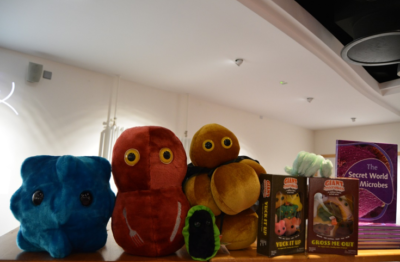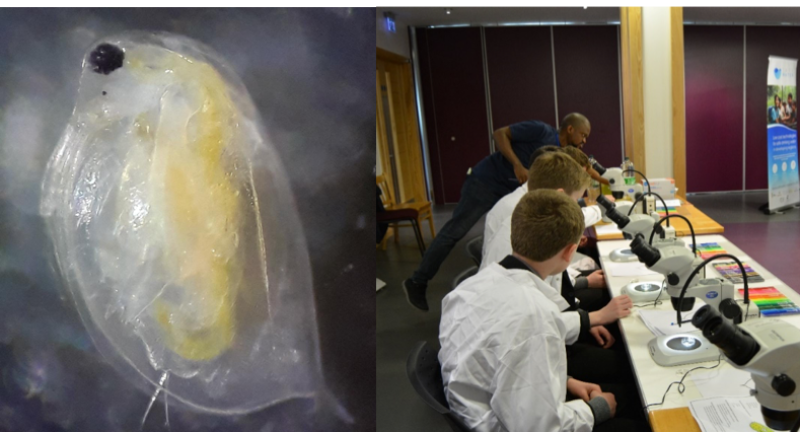Life as an antimicrobial resistance researcher
Posted on March 6, 2019 by Chris Proctor
Chris Proctor is a PhD Researcher at Ulster University in Northern Ireland and a member of the Microbiology Society. In this blog he discusses his contribution at the Northern Ireland Science Festival and his project ‘Life as an Antimicrobial Researcher’ which was designed to show young students the breadth and complexity of antimicrobial resistance research (AMR).
All sySTEMs Go:
The Northern Ireland Science Festival is an annual event, spanning ten days, that is aimed towards both scientists and the general public alike. It is always a well-received and enjoyable event that helps to foster a love of learning and science in everyone who attends. This year, as part of the festival, Ulster University organised an event called All sySTEMs Go, with the goal of helping to encourage school kids to consider a career in STEM subjects.
The event consisted of a number of activities running all day on the Ulster University Coleraine campus with around a hundred 14–15-year-old students from three schools. Each event was aimed at giving the students some experience of what STEM subjects at university were like and what careers they could lead to ahead of the students picking their GCSE subjects.
I am a second year PhD student in the microbiology and pharmacy departments of Ulster University and have been a Microbiology Society Champion since early 2018. As soon as I heard about All sySTEMs Go, I knew it would be an excellent opportunity to show some future scientists just how rewarding a career in the microbiological sciences can be.
The event

The day’s activities began with an introduction to AMR and resistant bacteria; what they are, where they’re found and what can be done about them.
‘Life as an Antimicrobial Researcher’ was designed to show young students the breadth and complexity of antimicrobial resistance research (AMR) in an engaging and understandable way. We also hoped to show that microbiology is not the only way to become involved in AMR research, and so collaborated with four departments to help inspire our visitors.

“Oh my gosh, they are so cute! I really want the pink one!”:
I think this quote from a Dominican College student might
be the first time anyone has called Streptococcus pyogenes cute!
Since the students were from different schools and therefore had very different science backgrounds, they were greeted with an introduction to AMR. After a few noises of disgust on finding out that resistant bacteria are all around us, the students were given a competition sheet on antimicrobial resistance (AMR). This sheet gave them the chance to win one of our Giant Microbes as a prize (huge thanks to the Microbiology Society for sponsoring the event and allowing us to have such fantastic prizes).
Throughout the day, students were given the chance to learn how sawdust can be useful in removing antibiotics from waste waters with Oluwushina, a second year PhD student from the Pharmacy department. This really simple demonstration of the removal of crystal violet from water was a hit with the kids and they learned how excess antibiotics in waste waters contribute to the development of AMR.
Up next was some time with our Environmental Science department and final year PhD student Temilola, who had brought along samples of Daphnia, small planktonic crustaceans. Temilola did an excellent job of teaching the students about how the filter feeding Daphnia can contribute to AMR in our lakes and rivers. He explained just how important it is for microbiologists and environmental scientists alike to understand these processes. Seeing the wriggling Daphnia down the microscope prompted choruses of “ewww!” and “gross!” but it’s an opportunity I doubt the students will forget.

An example of the live Daphnia samples the students worked with (left).
Temilola showing our visitors how to find the Daphnia with their microscopes (right).
Finally, our students got to work with our engineering colleagues from the SafeWater project to build a do-it-yourself water filter and learned about the new colour changing detection system for identifying water contaminated with bacteria. This messy stand was very popular with the students and added an element of competition between friends to see who could build the best water filter – with some of the students even trying to beat our demonstrators.
Overall, ‘Life as an Antimicrobial Researcher’ and the ‘All sySTEMs Go’ events were a great success enjoyed by both students and staff. The students got a first-hand look at life as a microbiologist as well as experience of the wide range of specialists that microbiologists collaborate with on a daily basis. The event will undoubtedly make a return to the Norther Ireland Science Festival again next year and I hope to organise a bigger and better event to inspire another new generation of young microbiologists.

